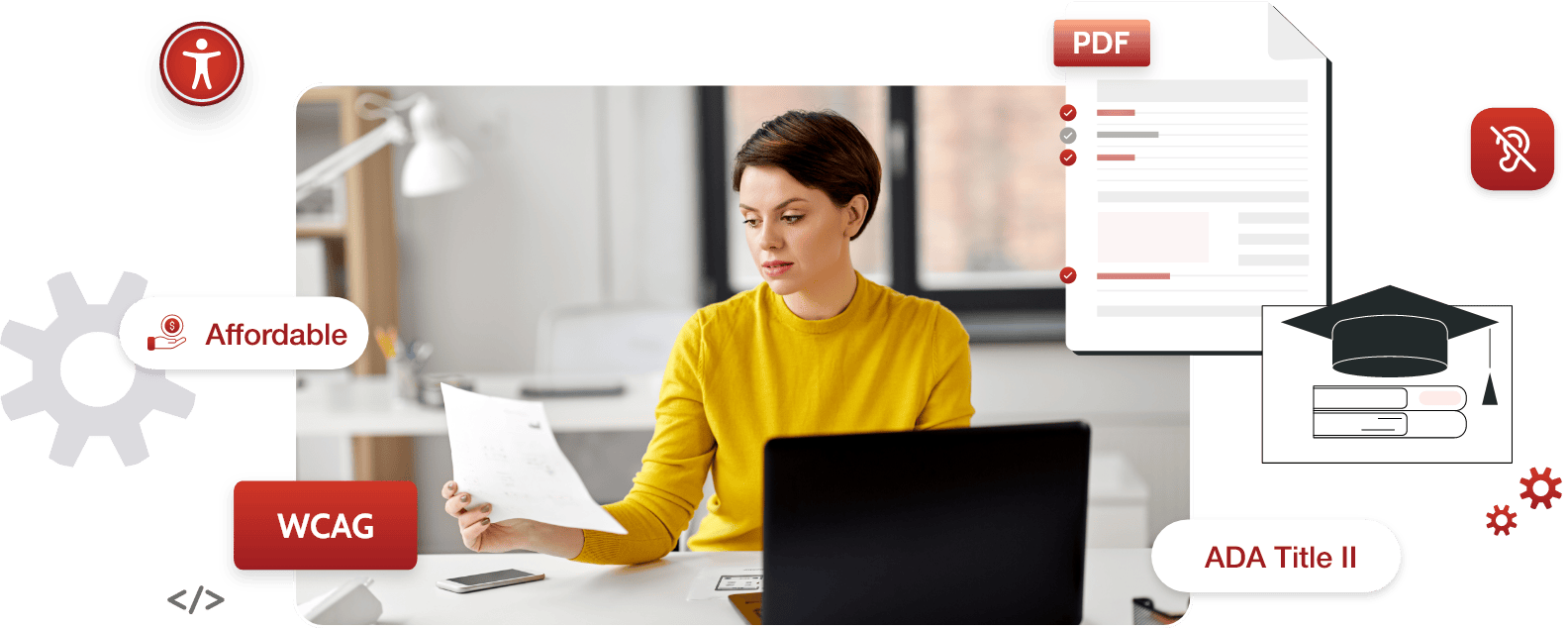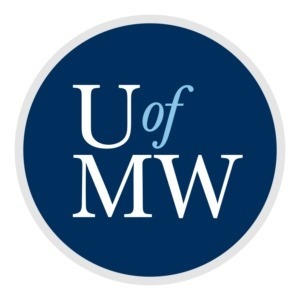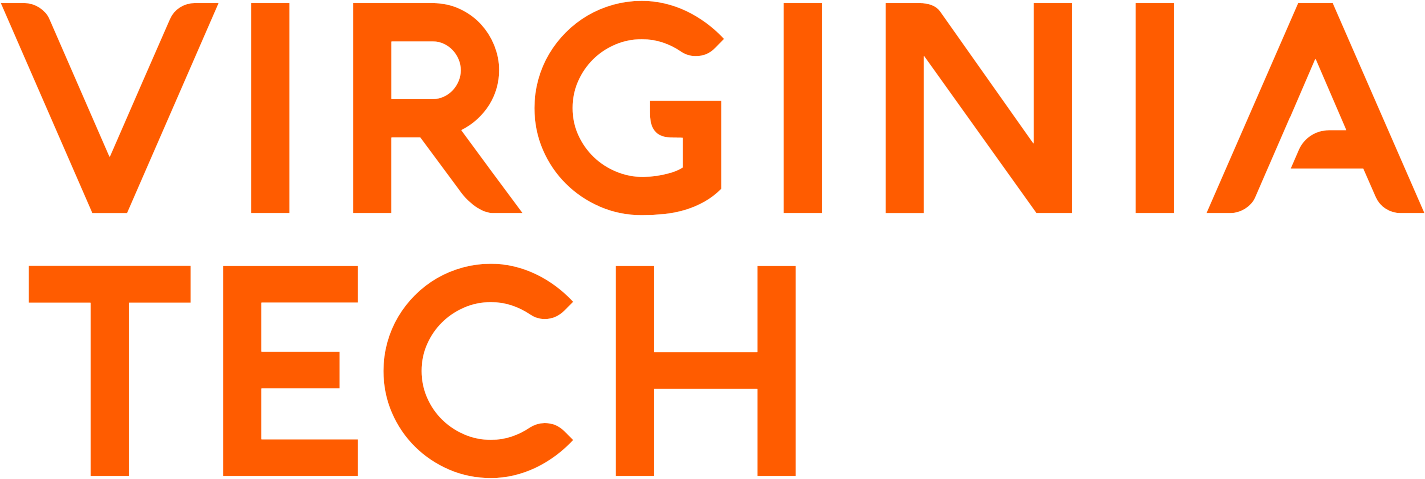Stay ahead of WCAG, PDF/UA, and ADA Title II requirements. PREP’s automation achieves faster, affordable, and accurate document compliance at scale.

Accessibility Alignment for Higher Education
Information Security Management System
End-to-End Governance
Defined Roles & Technical Controls
Assistive Technology Coordinator,
Disability Resources Faculty Advisor, Zeta Mu
University of Mary Washington
ATI Manager
George Mason University
Director, Instructional Design, Academic Affairs
Lynn University
Accommodations Coordinator,
Disability & Accessibility Resources
Reed College











With ADA Title II updates around the corner and rising compliance demands, institutions are stuck between growing expectations and limited capacity. Most institutions remain committed to accessibility but limited capacity stands in the way of progress. Institutions are expected to deliver inclusive course materials without the tools, training, or time to do so. Disability services teams are stretched thin, remediating PDFs manually while new requests continue to pile up. Meanwhile, compliance requirements are accelerating faster than most systems can adapt.

Legacy course materials, scanned documents, and outdated formats weren’t designed for accessibility and they’re only growing.
STEM equations, tables, and multilingual text often break automation and create inconsistent user experiences.
Human remediation is time-intensive and expensive and still struggles to scale across thousands of files.
When it’s treated as a final step, remediation becomes slower, costlier, and harder to manage.
With small teams and tight timelines, institutions are stretched thin trying to meet accessibility demands.

Our AI-powered tool replaces manual remediation with smart automation, giving your teams a faster, simpler way to deliver high-quality accessible documents across departments and campuses.
| The Challenge | How PREP Helps |
|---|---|
| Speed & Scale | |
|
Educational teams are flooded with accessibility requests, but lack tools to respond quickly and at volume.
|
PREP automates over 90% of tagging and compliance checks, reducing remediation time by 60% and cutting costs by up to 50%, all without compromising on accuracy.
|
|
Institutions face bottlenecks when new formats and materials need fast remediation.
|
PREP integrates directly with LMS platforms like Canvas and D2L Brightspace, eliminating upload-download cycles and speeding up accessibility workflows.
|
|
Institutions lack the internal capacity to handle complex, time-sensitive remediation.
|
PREP’s Remediation Services Platform enables you to outsource complex files with just 1 click.
|
| Accuracy & Compliance | |
|
Manual tagging is inconsistent and risks non-compliance with WCAG, PDF/UA, and ADA Title II.
|
PREP ensures consistent, standards-aligned output across documents, backed by a built-in accessibility checker and screen reader preview.
|
|
Teams struggle to meet varying regional and international accessibility mandates.
|
PREP’s outputs are 100% compliant with WCAG, PDF/UA, ADA Title II updates.
|
|
Multilingual content, including right-to-left languages, is difficult to remediate accurately.
|
PREP supports multiple languages, including Hebrew and Arabic, with precise rendering and compliance validation.
|
| Complex Documents & Diverse Formats | |
|
STEM visuals, maps, and charts lack meaningful alt-text that’s accurate and contextually relevant.
|
PREP’s image GPT automatically generates alt-text for complex visuals like math formulae and chemistry equations and offers optional SME verification.
|
|
Manual remediation of bulk or similar documents slows down institutional response times.
|
1-click bulk tagging for templates and repetitive formats accelerates delivery and reduces effort.
|
|
PDF remediation alone isn’t enough, learning content spans multiple formats.
|
Continual Engine offers multi-format accessibility, including PowerPoints, ePubs, image PDFs, and more through outsourcing.
|
| Integration & Workflow Compatibility | |
|
Remediation tools often sit outside core academic workflows, causing inefficiencies.
|
PREP API plug-in allows institutions to embed real-time remediation into existing systems like CMS, DMS, or intranets.
|
|
Accessibility needs are spread across large, collaborative teams with decentralized content.
|
PREP enables collaborative access, user management, and real-time versioning, supporting teams of all sizes.
|
|
Lack of visibility into document remediation progress across users, departments, and timeframes limits planning and scaling.
|
PREP offers admin controls to track usage, create users, and assign work. This helps teams manage large volumes, monitor progress, and plan training or task allocation effectively.
|

Host PREP on trusted cloud infrastructure like AWS, Azure, or Google Cloud to scale fast and reduce internal IT load.
Access PREP directly through your browser. We handle the hosting, maintenance, and updates so your team can focus on remediation.
Deploy PREP across your institution with secure SSO login and flexible hosting options, ensuring smooth access and centralized control at scale.
Run part of PREP on your servers and part in the cloud. Useful when certain workflows or sensitive data must stay local while benefiting from cloud scalability.
PREP offers robust API integration so your teams can connect systems, automate processes, and scale remediation without starting from scratch.




Absolutely. PREP integrates directly with popular LMS platforms like Canvas and D2L Brightspace, and also supports API-based integration with your CMS, DMS, or intranet to embed accessibility into existing workflows.
PREP is simple to use. It takes just 3 steps to remediate your document:
You stay in control throughout the process. For more information, please visit our PREP platform page.
Yes. PREP supports multiple languages, including right-to-left scripts like Hebrew and Arabic, ensuring contextually accurate output for diverse learners.
No problem. Continual Engine offers a fully managed Remediation Services Platform where you can outsource complex or time-sensitive files with just 1 click.
Yes. PREP follows stringent data protection protocols and complies with ISO 27001, SOC 2 Type II, GDPR, and other leading security standards.
"*" indicates required fields